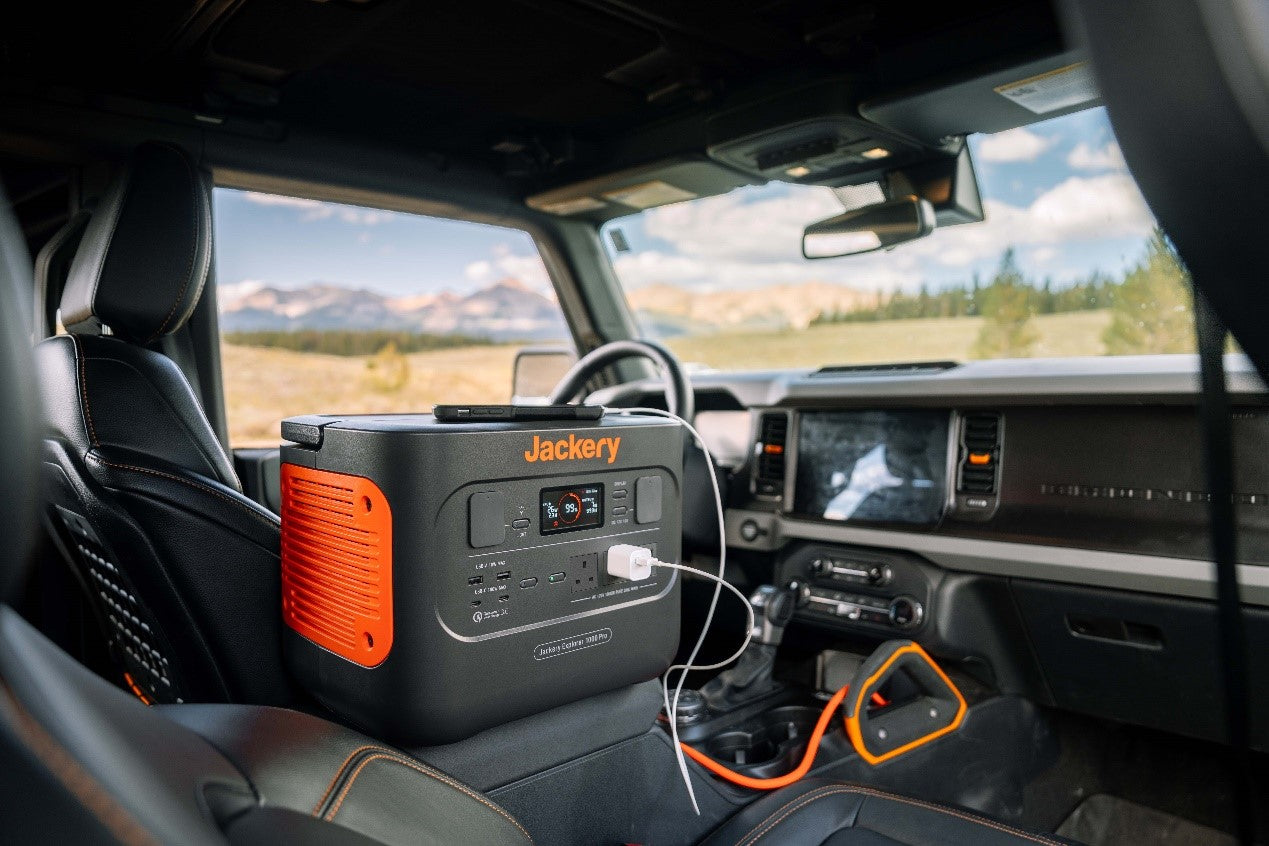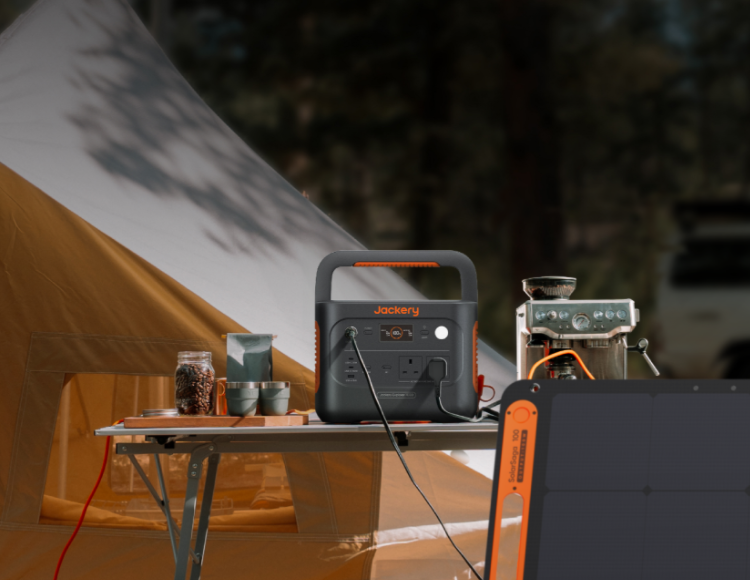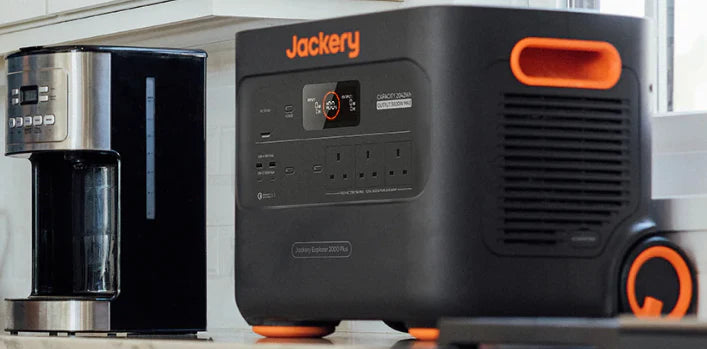Many homeowners are looking for ways to be more self-sufficient and off-grid. The best way to do so is by choosing portable power stations. kWh and amps are two essential terms to understand power.
kWh stands for kilowatt-hour, and it is a unit of energy. On the other hand, amps measure the amount of current flowing through an electrical circuit. You can convert kWh to amps using the formula: amps equal to wattage divided by volts.
Jackery offers a line of portable power stations with high capacity and multiple ports. The Jackery Explorer 1000 v2, for example, has a capacity of 1,070Wh and features various ports, including AC outlets, USB ports, DC outputs, and a 12V carport.
 |
|
|
- Quick AC charging in 2 hours - Large battery capacity of 1,070Wh - Multiple output ports to charge appliances - Built with industry-leading BMS technology - Powers nearly 96% of your appliances |
What is kWh to Amps
Watt-hour, abbreviated Wh, equals one watt of power or output expended in one hour.
Kilowatt-hour, abbreviated kWh, is a term that measures electrical energy. One kilowatt-hour of energy equals one kilowatt of power consumed in one hour.
Amps or amperes is a standard electric current unit. It is the rate of speed at which electrons flow through a conductor.
Amp-hours, abbreviated Ah, is a term that measures electrical charge or battery capacity. One amp-hour charge equals one amp of current transferred in one hour.
Milliamp-hour, abbreviated mAh, is a commonly used electric charge unit that describes small battery capacities. It is the amount of power a battery or power station can hold.
Relation Between kWh and Amps
If you want to convert kWh to Amps, you can use the below formula:
Amps = (kWh × 1000) ÷ (V × H)
Where
kWh = Kilowatt-hour used
V = Voltage of the system
H = Number of hours
Let's say you have an electric device running on a standard 120V circuit for 5 hours. The kilowatt-hour, in this case, is nearly 6kWh.
Amps = (6kWh × 1000) ÷ (120V × 5H) = 10A
Line-to-Line Voltage: Also called line voltage, it is the voltage between any two given phases.
Line-to-Neutral Voltage: Also called phase voltage, it is the voltage between any given phase and neutral.
How to Convert Amps to kWh
The formula to convert amps to kWh is given below:
kWh = Amps × Volts × Hours of Use / 1000
Let's say you are running a 20 amps electric device on a standard 120V circuit for 4 hours.
Kilowatt-hour = 20A × 120V × 4H / 1000 = 9.6 kWh.
Amps to kWh calculation is helpful when sizing the power station or battery. Since energy usage is generally listed in Wh or kWh, calculating the battery's kilowatt hours will help determine how long the battery can power any device or appliance.
Amps to kWh Conversion Table
|
Current (Amps) |
12V Voltage |
24V Voltage |
120V Voltage |
220V Voltage |
|
1 Amp |
0.012 kWh |
0.024 kWh |
0.12 kWh |
0.22 kWh |
|
2 Amps |
0.024 kWh |
0.048 kWh |
0.24 kWh |
0.44 kWh |
|
3 Amps |
0.036 kWh |
0.072 kWh |
0.36 kWh |
0.66 kWh |
|
4 Amps |
0.048 kWh |
0.096 kWh |
0.48 kWh |
0.88 kWh |
|
5 Amps |
0.060 kWh |
0.120 kWh |
0.60 kWh |
1.10 kWh |
How to Convert kWh to Ah
Converting kWh (electrical energy) to Ah (electrical charge) can be done using the below formula.
Ah = (kWh × 1000) ÷ V
That is, the electrical charge in amp-hours equals the energy in kilowatt-hours times 1000, divided by voltage.
Example: Let's convert 6kWh at 120V to Ah.
Ah = (6kWh × 1000) ÷ 120V = 50Ah.
Although both amps and amp-hours measure electrical charge, they are different. Ampere is the rate at which electrons pass through an electrical conductor. In contrast, amp-hours is the charge that moves through the source in one hour.
kWh to Ah conversion is of utmost importance when estimating the battery capacity. Electrical energy is usually measured in kWh, whereas battery capacity is rated in Ah. If you want to determine which battery capacity will meet your electricity needs, you'll need to convert kWh to Ah.
kWh to Ah Conversion Table
|
Kilowatt Hours |
Amp Hours @ 12V |
Amp Hours @ 24V |
|
1 kWh |
83.33 Ah |
41.67 Ah |
|
2 kWh |
166.67 Ah |
83.33 Ah |
|
3 kWh |
250 Ah |
125 Ah |
|
4 kWh |
333.33 Ah |
166.67 Ah |
|
5 kWh |
416.67 Ah |
208.33 Ah |
How to Convert Ah to kWh
If you want to convert Ah to kWh, you'll need to multiply amp hours times volts divided by 1000.
kWh = (Ah × V) ÷ 1000
Suppose you want to calculate the kilowatt-hour of the battery. The first step is to locate its amp-hour and voltage, which are often printed on the battery. In this example, we suppose the battery has 100 amp hours and a voltage of 12V.
Kilowatt-hour = (100Ah × 12V) ÷ 1000 = 1.2kWh
Ah to kWh conversion is vital in comparing batteries of different voltages. For example, when we compare a 12V 100Ah battery and a 24V 60Ah, it's better to calculate kWh in each case.
For a 12V 100Ah battery, the kWh will be 1.2kWh. In contrast, for the 24V 60Ah battery, the kWh will be 1.44kWh. That means a 24V 60Ah battery stores more energy compared to 12V 100Ah.
Ah to kWh Conversion Table
|
Amp Hours |
Kilowatt Hours @ 12V |
Kilowatt Hours @ 24V |
|
100 Ah |
1.2 kWh |
2.4 kWh |
|
200 Ah |
2.4 kWh |
4.8 kWh |
|
300 Ah |
3.6 kWh |
7.2 kWh |
|
400 Ah |
4.8 kWh |
9.6 kWh |
|
500 Ah |
6 kWh |
12 kWh |

How to Convert kW to Amps
Kilowatts is the measure of power, whereas ampere is used to describe current. Since they measure two different units, kW cannot be directly converted to amps. You must know the voltage of the system to execute the conversion.
For any DC circuit, you can convert kW to amps using the below formula.
Amps = 1000 × kW / V
For any single-phase AC circuit, you'll need to keep the power factor in mind.
Amps = 1000 × kW / V × PF
Let's find the current of a 10kW motor with a power factor of 0.8 at 240V.
Amps = 1000 × 10kW / 240V × 0.8 = 52A
Here, the voltage is the RMS value of the applied AC voltage, and PF is the power factor of the load.
Motor Current Ratings (Single-Phase AC)
|
Power |
Current at 120V |
Current at 240V |
|
1 kW |
10.417 A |
5.208 A |
|
2 kW |
20.833 A |
10.417 A |
|
3 kW |
31.25 A |
15.625 A |
|
4 kW |
41.667 A |
20.833 A |
|
5 kW |
52.083 A |
26.042 A |
For any three-phase AC circuit, you can convert kW to amps if the line-to-line and line-to-neutral voltage are known.
Line-to-Line Voltage:
A = 1000 × kW ÷ (√3 × PF × V)
Line-to-Neutral Voltage:
A = 1000 × kW ÷ (3 × PF × V)
Let's calculate the current of a 30kW three-phase motor with a power factor of 1 and a line-to-line voltage of 240V.
A = 30kW × 1000 ÷ (√3 × 1PF × 240V) = 72 amps
If you want to calculate the amps of 3kW with a line-to-neutral voltage of 60V and 0.8 PF, here's how you can do it.
A = 3kW × 1000 ÷ (3 × 0.8PF × 60V) = 20.8 amps
Motor Current Ratings (Three-Phase AC at Line-to-Line Voltage)
|
Power |
Current at 120V |
Current at 208V |
Current at 240V |
Current at 277V |
Current at 480V |
|
1 kW |
6.014 A |
3.47 A |
3.007 A |
2.605 A |
1.504 A |
|
2 kW |
12.028 A |
6.939 A |
6.014 A |
5.211 A |
3.007 A |
|
3 kW |
18.042 A |
10.409 A |
9.021 A |
7.816 A |
4.511 A |
|
4 kW |
24.056 A |
13.879 A |
12.028 A |
10.421 A |
6.014 A |
|
5 kW |
30.07 A |
17.348 A |
15.035 A |
13.027 A |
7.518 A |
The main reason to convert kilowatts to amps is by adequately sizing and selecting electrical components.
How to Convert Amps to kW
The simple way to convert amps to kW is by using Watt's Law power formula, which states that I (Amps) = P (Watts) ÷ V (Volts).
The amps to kilowatts conversion formula in the DC circuit is:
Kilowatts = (Amps × Voltage) ÷ 1000
That means the power in kilowatts equals current in amps multiplied by voltage in volts divided by 1000.
Let's say you want to find kilowatts of a circuit with 24 amps of current at 120V.
P (in Kilowatts) = (24A × 120V) ÷ 1000 = 2.88kW
|
Current in Amps (A) |
Voltage in Volts (V) |
Kilowatts (kW) |
|
10 Amps |
200 Volts |
2 kW |
|
20 Amps |
210 Volts |
4.2 kW |
|
30 Amps |
220 Volts |
6.6 kW |
|
70 Amps |
230 Volts |
16.1 kW |
|
100 Amps |
240 Volts |
24 kW |
For any single-phase AC circuit, you'll need to consider the RMS voltage, current, and power factor.
P (kW) = (Amps × Volts × PF) ÷ 1000
The power factor in the single-phase AC circuit is determined by the AC frequency and the amount of inductive or capacitive circuit elements.
|
Current in Amps (A) |
Voltage in Volts (V) |
Power Factor |
Kilowatts (KW) |
|
40 Amps |
222 Volts |
0.11 |
0.976 KW |
|
43 Amps |
232 Volts |
0.12 |
1.197 KW |
|
46 Amps |
242 Volts |
0.13 |
1.447 KW |
|
49 Amps |
252 Volts |
0.14 |
1.728 KW |
|
52 Amps |
262 Volts |
0.15 |
2.043 KW |
For any three-phase AC circuit, there are two formulas to convert amps to kW.
Line-to-Line Voltage:
P (in kW) = [Amps × Voltage (Line-to-Line) × PF × √3] ÷ 1000
This equation is correct when considering one pair of wires in the three-phase system.
Line-to-Neutral Voltage:
P (in kW) = [Amps × Voltage (Line-to-Neutral) × PF × 3] ÷ 1000
Jackery Power Stations Explained
When looking for a portable power station, you'll need to look for its battery capacity. As a general rule of thumb, the bigger the battery capacity, the longer you can run your appliances. The standard metrics used to measure battery capacity include mAh, Ah, Wh, and kWh.
Jackery is a leading manufacturer of robust and portable solar panels, power stations, and solar generators. The battery-powered solar systems are designed to supply stable electricity to most of your home or outdoor appliances.
Jackery Explorer 1000 v2 Portable Power Station
The Explorer 1000 v2 Portable Power Station offers a remarkable 1500W output, 50% higher than previous generations, effortlessly powering high-demand essentials like refrigerators, kettles, and portable air conditioners. Featuring USB-A/C ports and up to 100W dual PD charging, it's capable of keeping multiple devices (phone, laptop) charged simultaneously, making it the ultimate companion for all your power needs.
Jackery Explorer 1000 Pro Power Station
Jackery Explorer 1000 Pro provides on-the-go power to 93% of your home or outdoor appliances. The ergonomic design with compact size makes it suitable for outdoor activities like hiking, backpacking, etc. It has a battery capacity of 1002Wh to power small and large appliances for long hours.

Jackery Explorer 2000 Pro Power Station
Jackery Explorer 2000 Pro features a lithium-ion battery of 2160Wh and an output power of 2200W. The power station can charge 96% of your appliances during power outages and camping. It has outstanding features, like the ability to recharge fully in 2 hours via AC input.

|
Series |
Appliances |
|
Blender (300W): 2.5H Space Heater (350W): 2.5H Microwave (700W): 1.2 H Kettle (850W): 1 H |
|
|
Toaster (650W): 2.8H Microwave (700W): 2.6H Kettle (850W): 2.1H Ice Shaver (700W): 2.6H Portable Air Conditioner (1150W): 1.6H |
kWh to Amps FAQs
How do you convert kWh per year to amps?
To convert kWh per year into amps, you can use the formula:
Amps = (kWh per year × 1000) ÷ (V × H)
For instance, if you are using an electrical appliance consuming 1000 kWh per year at 120V, then the current draw can be calculated as follows:
Amps = (kWh × 1000) ÷ (V × H) = (1000kWh × 1000) ÷ (120V × 365H) = 22.8A.
Here we assume that the electrical appliance is used for one hour daily.
How many amps hours is 3.6 kWh?
If you have 3.6kWh at 12V, you can convert kWh to Ah using the below formula.
Ah = kWh × 1000 ÷ V = 3.6kWh × 1000 ÷ 12V = 300Ah.
What are the relations of amps, watts, and volts?
Amps means the number of electrons flowing through a certain point at any time. Watts is the power or energy an electric appliance consumes. Volts measure the pressure required for an electric current to flow past a wire.
In mathematical terms, watts equals the multiplication of amps and volts.
Relationship between watts, amps, and volts :W = A × V
For instance, if the electric device consumes 10 amps at 12V, the wattage of the appliance will be 10A × 12V = 120W.
Final Thoughts
Kilowatt-hour and amp-hour are critical units for solar systems or electric appliances. You can calculate the compatible solar generator by understanding how much kWh or Wh battery capacity a power station has.
Converting kWh to amps will help you select which power station can supply seamless electricity to your appliances for a long time. Jackery Explorer Portable Power Stations are designed with high Wh and Ah ratings to provide electricity to small and large appliances for a long time.


































































































